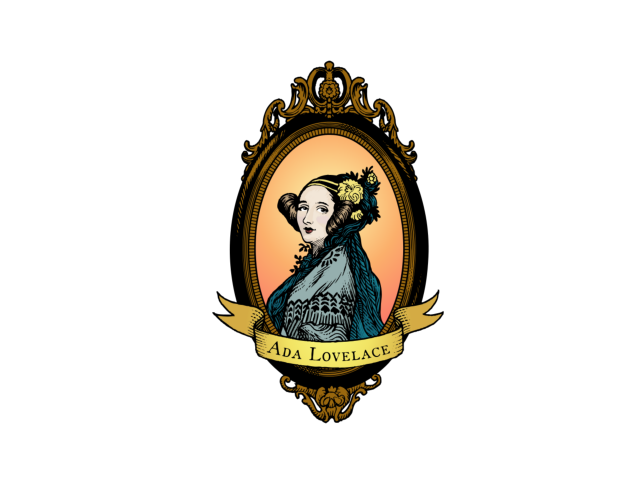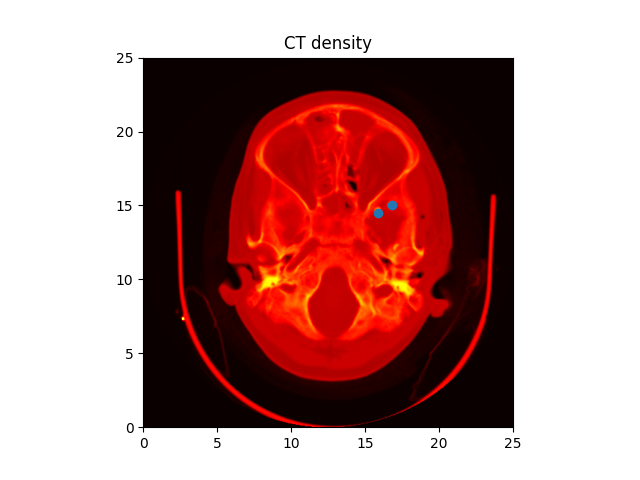注解
Click here 下载完整的示例代码
图像演示¶
在Matplotlib中绘制图像的许多方法。
在matplotlib中,最常见的绘制图像的方法是 imshow . 下面的示例演示了imshow的许多功能以及您可以创建的许多图像。
import numpy as np
import matplotlib.cm as cm
import matplotlib.pyplot as plt
import matplotlib.cbook as cbook
from matplotlib.path import Path
from matplotlib.patches import PathPatch
# Fixing random state for reproducibility
np.random.seed(19680801)
首先,我们将生成一个简单的二元正态分布。
delta = 0.025
x = y = np.arange(-3.0, 3.0, delta)
X, Y = np.meshgrid(x, y)
Z1 = np.exp(-X**2 - Y**2)
Z2 = np.exp(-(X - 1)**2 - (Y - 1)**2)
Z = (Z1 - Z2) * 2
fig, ax = plt.subplots()
im = ax.imshow(Z, interpolation='bilinear', cmap=cm.RdYlGn,
origin='lower', extent=[-3, 3, -3, 3],
vmax=abs(Z).max(), vmin=-abs(Z).max())
plt.show()
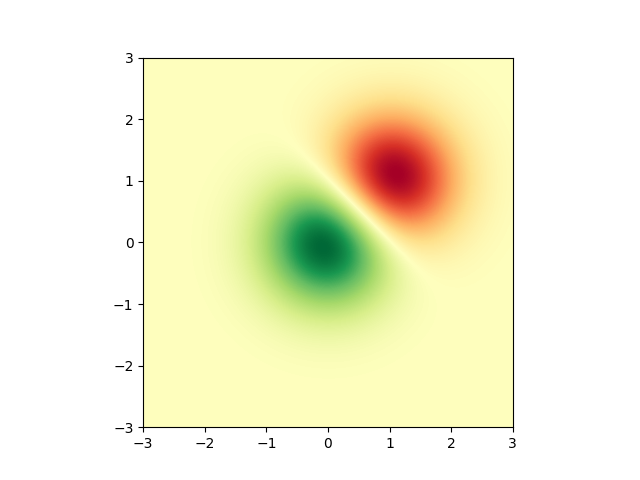
也可以显示图片的图像。
# A sample image
with cbook.get_sample_data('ada.png') as image_file:
image = plt.imread(image_file)
fig, ax = plt.subplots()
ax.imshow(image)
ax.axis('off') # clear x-axis and y-axis
# And another image
w, h = 512, 512
with cbook.get_sample_data('ct.raw.gz') as datafile:
s = datafile.read()
A = np.frombuffer(s, np.uint16).astype(float).reshape((w, h))
A /= A.max()
fig, ax = plt.subplots()
extent = (0, 25, 0, 25)
im = ax.imshow(A, cmap=plt.cm.hot, origin='upper', extent=extent)
markers = [(15.9, 14.5), (16.8, 15)]
x, y = zip(*markers)
ax.plot(x, y, 'o')
ax.set_title('CT density')
plt.show()
插值图像¶
也可以在显示图像之前插入图像。要小心,因为这可能会操纵数据的外观,但它有助于实现所需的外观。下面我们将显示相同的(小)数组,用三种不同的插值方法进行插值。
像素的中心 [i, j] 在(i+0.5,i+0.5)处绘制。如果使用interpolation='nearest',以(i,j)和(i+1,j+1)为边界的区域将具有相同的颜色。如果使用插值,则像素中心将具有与“最近”相同的颜色,但其他像素将在相邻像素之间插值。
为了在执行插值时防止边缘效应,Matplotlib在输入数组的边缘周围填充相同的像素:如果您有一个5x5数组,颜色为a-y,如下所示:
Matplotlib计算填充数组上的插值和调整大小:
然后提取结果的中心区域。(Matplotlib的极旧版本(<0.63)没有填充数组,而是调整视图限制以隐藏受影响的边缘区域。)
这种方法允许在没有边缘效果的情况下绘制阵列的全部范围,例如,使用不同的插值方法将不同大小的多个图像叠放在另一个图像上—请参阅 图层图像 . 它还意味着性能下降,因为必须创建这个新的临时填充数组。复杂的插值也意味着性能下降;对于最大性能或非常大的图像,建议使用interpolation='nearest'。
A = np.random.rand(5, 5)
fig, axs = plt.subplots(1, 3, figsize=(10, 3))
for ax, interp in zip(axs, ['nearest', 'bilinear', 'bicubic']):
ax.imshow(A, interpolation=interp)
ax.set_title(interp.capitalize())
ax.grid(True)
plt.show()

可以指定是否应使用数组原点X打印图像。 [0, 0] 在左上角或右下角使用原点参数。您还可以控制默认设置image.origin matplotlibrc file . 有关此主题的更多信息,请参阅 complete guide on origin and extent .
x = np.arange(120).reshape((10, 12))
interp = 'bilinear'
fig, axs = plt.subplots(nrows=2, sharex=True, figsize=(3, 5))
axs[0].set_title('blue should be up')
axs[0].imshow(x, origin='upper', interpolation=interp)
axs[1].set_title('blue should be down')
axs[1].imshow(x, origin='lower', interpolation=interp)
plt.show()
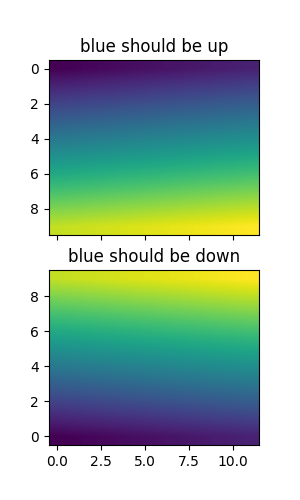
最后,我们将使用剪辑路径显示图像。
delta = 0.025
x = y = np.arange(-3.0, 3.0, delta)
X, Y = np.meshgrid(x, y)
Z1 = np.exp(-X**2 - Y**2)
Z2 = np.exp(-(X - 1)**2 - (Y - 1)**2)
Z = (Z1 - Z2) * 2
path = Path([[0, 1], [1, 0], [0, -1], [-1, 0], [0, 1]])
patch = PathPatch(path, facecolor='none')
fig, ax = plt.subplots()
ax.add_patch(patch)
im = ax.imshow(Z, interpolation='bilinear', cmap=cm.gray,
origin='lower', extent=[-3, 3, -3, 3],
clip_path=patch, clip_on=True)
im.set_clip_path(patch)
plt.show()
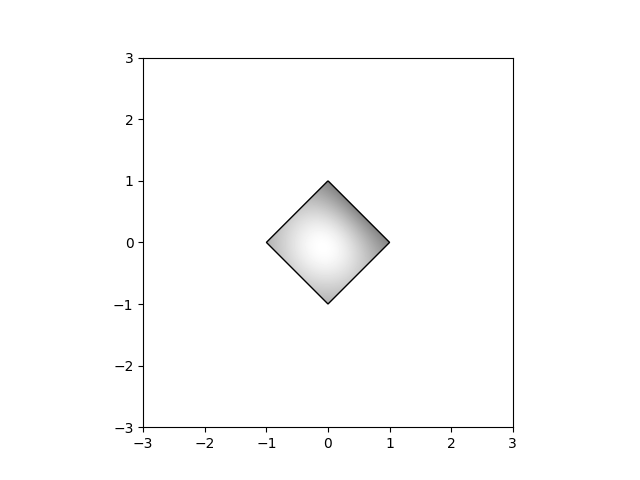
工具书类¶
本例中显示了以下函数和方法的使用:
脚本的总运行时间: (0分3.207秒)
关键词:matplotlib代码示例,codex,python plot,pyplot Gallery generated by Sphinx-Gallery
